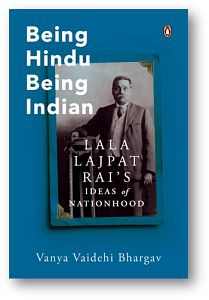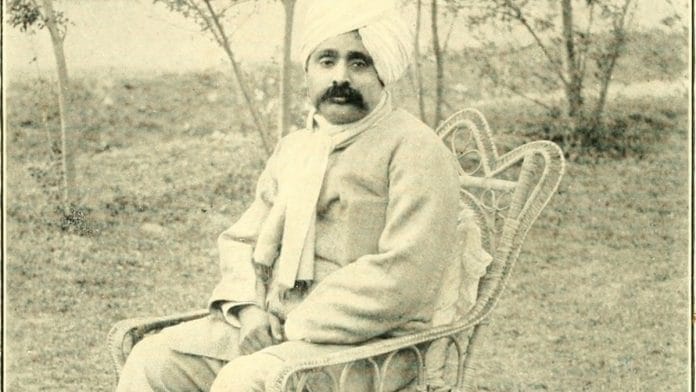Regardless of genuine intellectual overlaps, and his own fleeting seduction by aspects of Hindutva when he read it, Lajpat Rai’s views remained distinct from Savarkar’s. Firstly, Rai’s expression of discomfort about ‘Pan-Islamism’ itself does not make him a Hindu nationalist of a Hindutva or any other variety. Whether one evaluates this position as problematic or not, such unease has sometimes also accompanied certain types of secular Indian nationalism that substantially respected India’s religio-cultural diversity. Additionally, in Rai’s case, fears about Pan-Islamism, Muslim strength, and Muslim domination were at least partly also the result of his position as a member of a Hindu minority in Muslim-majority Punjab.
His consideration of democratic reforms for Muslim-majority NWFP, and support for the Delhi Proposals and the Nehru Report illustrate that Lajpat Rai was able to overcome his anxieties about Pan-Islamism and Muslim domination, and grant Muslims their democratic advantage where they were majorities and constitutional protections where they constituted minorities. But fears about Muslim domination relentlessly gripped Savarkar, despite his hailing from Bombay Presidency with an overwhelming Hindu majority of 80 per cent.
Savarkar’s politics remained predominantly and systematically guided by the belief that Indian Muslims were ‘antinational’, more moved by Pan-Islamic concerns abroad than Indian concerns, and conspiring with Muslim nations to establish Muslim rule over Hindus in India. Unlike Lajpat Rai, Savarkar supported neither the Delhi Proposals nor the Nehru Report, apparently unable to bring himself to sanction constitutional protections for India’s religious minorities in the ways these proposals sought.
Also read: Kamakhya corridor, Guinness book entry—how Himanta Sarma is fashioning Assam renaissance
In the context of Hindu nationalism, it is essential to understand how the political landscape has evolved, particularly in places like Ayodhya, where the intersection of religion and politics has profound implications for the Hindu community. The recent elections have shown that the sentiments of Hindu voters are shifting, reflecting a broader understanding of what it means to be part of a diverse society. This is evident in the way Hindus for Human Rights have emerged as a voice advocating for a more inclusive interpretation of Hindu identity.
A second difference, which we have already encountered, was that throughout his life, as both an anti-colonial revolutionary and Hindutva proponent, Savarkar valorized violence, warfare, assassination, militarization and aggression as integral to politics. For him, Hindu sangathan was a vehicle to turn India’s Hindu majority into a permanent masculine and militarized Hindutva national brotherhood capable of violence. This was to take revenge on India’s Muslims for what he believed were historical wrongs committed by ‘them’, show Hindu majoritarian national strength and claim that India belonged primarily to Hindus.
Lajpat Rai viewed Hindu violence in communal ‘self-defence’ as legitimate, but was far from seeing militarism, aggression and violence as essential to any and all Hindu politics. While this constituted potentially perilous reasoning, considering there was no explicitly defined end to this temporariness, Lajpat Rai viewed militant Hindu sangathan as a temporary measure to demonstrate Hindu strength at a time when constitutional negotiations were underway. Hindu sangathan was conceptualized as an urgent but temporary and instrumental means by which to secure a constitutional pact with India’s Muslims that was ‘fair’ to the Hindu majority and in consonance with a secular democratic Indian nation–state, which respected diversity and could even consider reservations for Muslims. Aware of the potentially harmful effects of a ‘rapidly’ aggressive Hindu communal politics, Lajpat Rai sought to deliberately limit such politics by keeping it under the wing of Congress’s Indian nationalism.
As for Lajpat Rai’s praise for Savarkar’s definition of ‘Hinduness’ as constituting something broader than Hindu religiosity, and of ‘Hindus’ being united by common blood and culture, in the unsettling, violent context of the 1920s, Lajpat Rai had read this as providing a robust definition to a Hindu ‘community’ rather than a Hindu ‘nation’. Despite his praise, he had also hinted that he did ‘not agree with all his [Savarkar’s] views’.
Even if we disregard Rai’s cursory, vague allusion to some intellectual disagreement, we can discern from his writings and speeches, key differences between Rai’s nationalism and Savarkar’s Hindutva nationalism. As we have seen, first in Chapter 5 and then subsequently, for Savarkar, a ‘Hindu’, a member of the Hindutva nation, was one who: 1) was born in India and loved it as their fatherland, 2) possessed ‘Hindu blood’, 3a) had inherited Hindu culture and felt a loving attachment to it, and 3b) whose holy lands lay within the territory of India. The first two ‘essentials’ of Hindutva were necessary to be considered part of the Hindu nation, but not sufficient. Both parts of the third ‘essential’ were key: claiming ‘Hindu culture’ as one’s own and considering India alone as one’s holy land.
 This excerpt from Vanya Vaidehi Bhargav’s ‘Being Hindu Being Indian’ is published with permission from Penguin Random House.
This excerpt from Vanya Vaidehi Bhargav’s ‘Being Hindu Being Indian’ is published with permission from Penguin Random House.






